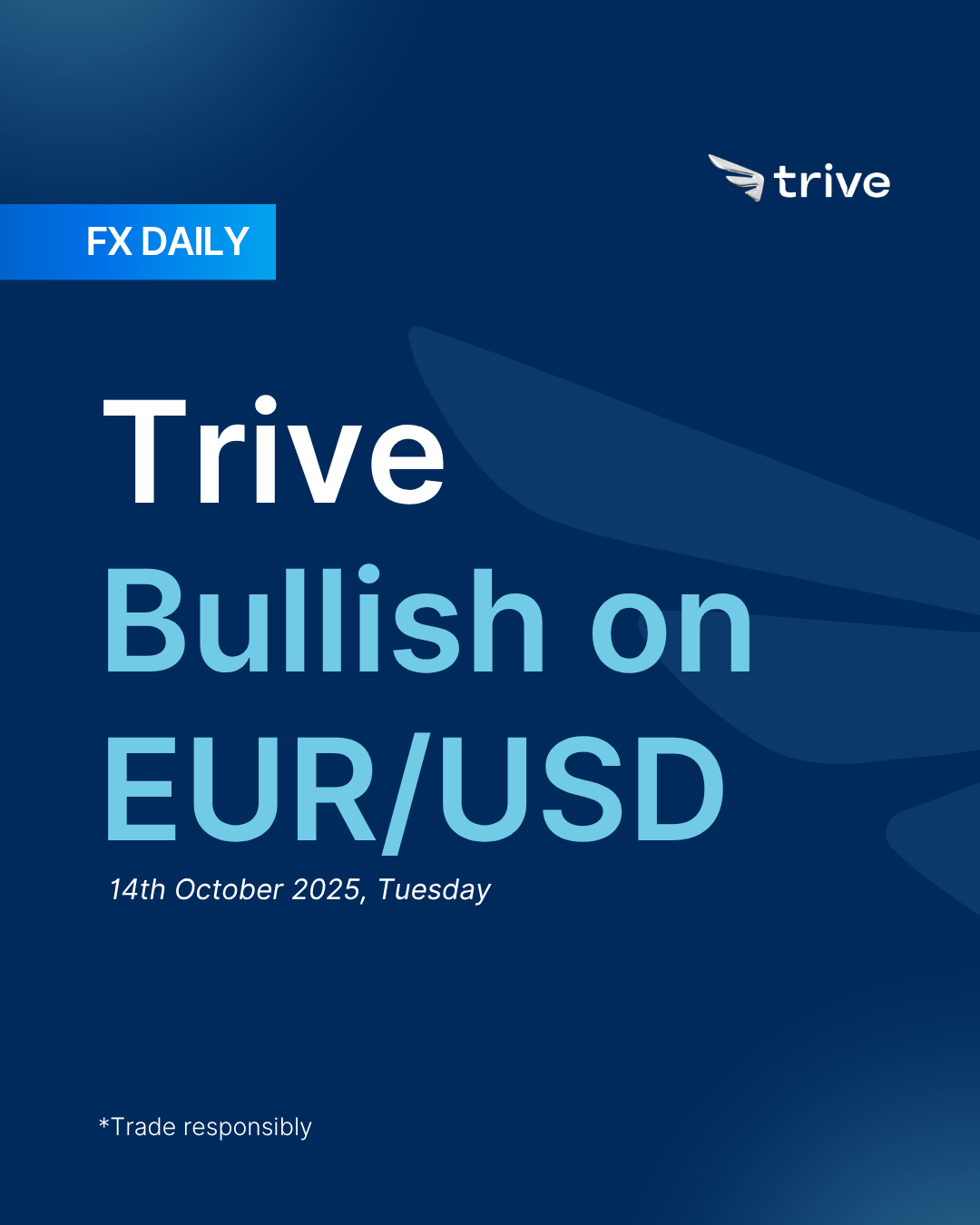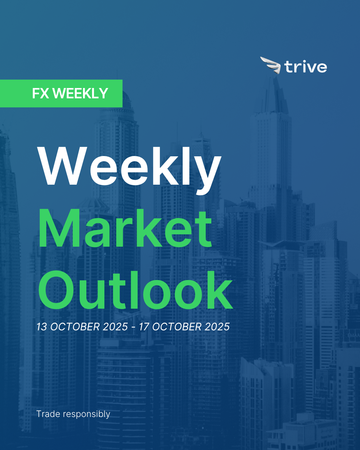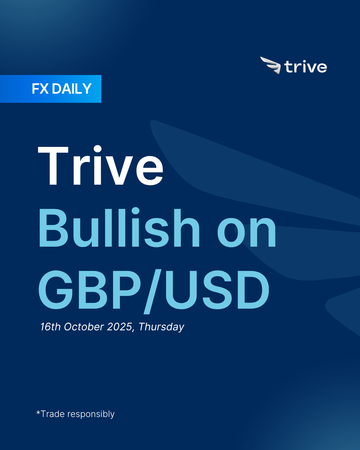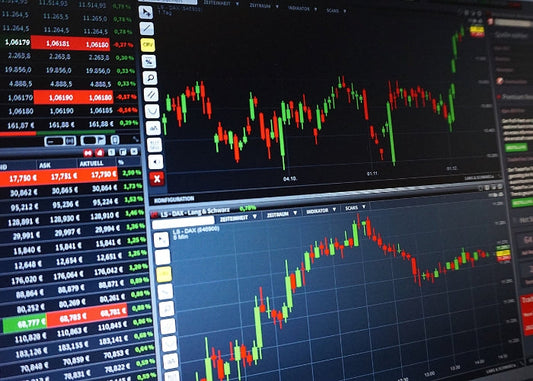FX Daily: Trive Bullish on EUR/USD

The euro rebounded as French political tensions eased and the USD weakened on renewed US-China trade fears. With the ECB steady and the Fed edging closer to rate cuts, narrowing yield differentials support further upside. As long as risk sentiment holds firm and no fresh French shocks emerge, we stay bullish on EUR/USD, viewing dips as buying opportunities.
EUR: Remain favor
The Euro was dominated by domestic political turmoil this week and spent most of its time on the defensive as a crisis in the French government spooked investors. The single currency started the week under heavy selling pressure, with EUR/USD breaking below the 1.1700 handle after French Prime Minister Lecornu abruptly resigned. The move heightened political uncertainty and caused the spread between French and German 10-year government bonds to widen to its highest level this year. The currency remained under pressure mid-week, weighed down by both the ongoing French saga and a string of dismal economic data from Germany. However, the Euro pared some of its losses into the weekend, finding relief as French political tensions showed signs of easing and as the US Dollar sold off sharply on renewed US-China trade fears.
The primary driver for the Euro was the political instability in France. The week began with the shock resignation of Prime Minister Lecornu, whose newly formed cabinet was met with objections from across the political spectrum, rendering his government unworkable. This left President Macron scrambling to find a solution, with options ranging from appointing a new Prime Minister to calling risky fresh legislative elections.
By late in the week, sentiment improved as it became clear that a majority of parliamentarians were against dissolving parliament, which made new elections less likely. President Macron was set to announce a new Prime Minister by Friday, with outgoing Prime Minister Lecornu tasked with holding last-ditch talks to find a compromise, particularly on the budget. This progress helped the Euro stabilize off its weekly lows.
Adding to the Euro’s woes was further evidence of weakness in the Eurozone’s largest economy. German Industrial Orders for August posted a surprise 0.8 percent fall, confounding expectations for a rebound. This was followed by a worse-than-expected 4.3 percent plunge in German Industrial Output for the same month, which deepened concerns about a potential economic contraction.
Commentary from ECB officials and the minutes from the September policy meeting reinforced a wait-and-see approach. The minutes showed that policymakers felt the current interest rate level was appropriate and that there was no immediate pressure to change policy. President Lagarde noted that the disinflationary process is over but that risks to growth are now more balanced. Other officials like Luis de Guindos and José Luis Escriva echoed that current policy is adequate, while a slightly more dovish tone came from ECB board member Rehn, who warned of a risk that inflation could slow to below the ECB’s 2 percent target.
The euro had a choppy week, sliding early as French political turmoil rattled confidence before clawing back part of the losses late in the week as tensions eased and the dollar retreated on renewed US-China trade worries. The initial selloff came after Prime Minister Lecornu’s abrupt resignation, which widened French-German spreads and pushed EUR/USD through key support levels. While weak German industrial data reinforced the sense of slowing growth, progress in resolving France’s government crisis and the dollar’s Friday slump allowed the euro to stabilize into the weekend.
Near term, neutral to weak bullish. The euro’s near term tone has steadied after a politically charged week, but conviction remains low. The main driver is still sentiment around French politics, which briefly revived fragmentation fears but has since eased. With ECB messaging consistent and rate expectations stable, modest support remains in place. We stay neutral to weak bullish overall, but we’ll only look for upside if the dollar softens and there are no fresh headlines about the French government situation. If the USD regains strength or risk sentiment turns defensive, we’ll lean back toward a mild bearish skew. Key data points, the ZEW survey, Lagarde’s Thursday remarks, and final CPI will determine whether the euro can build on its late week stability. Understand that political and sentiment forces have been leading price action, and such moves can remain dominant even when fundamentals diverge, but they can also reverse quickly when the tone shifts.
Longer term, weak bullish. The medium term picture still tilts mildly constructive. Relative rate compression should continue to favor the euro as the Fed edges closer to easing while the ECB stays patient. Contained fragmentation risk and a balanced energy backdrop offer additional stability, and the euro’s external accounts remain in solid shape. The softer German data run limits upside in the near term, but provided the French situation settles and eurozone spreads hold steady, the common currency should gradually regain support against the broader basket. We would lean more confidently bullish on a combination of firmer wage and services inflation, resilient PMIs, and stable front-end yields; conversely, a string of weak data or persistent fiscal slippage in France or Italy would soften this stance.
Update: Headlines now indicate that President Trump is seeking to preserve a constructive relationship with China and remains open to talks. If that rhetoric proves genuine and global sentiment turns risk on, the euro would likely benefit through a weaker dollar and a more bullish tone.
USD: Short at rally
The US Dollar experienced a turbulent week, initially climbing to multi-month highs on the back of weakness in other major currencies before dramatically reversing course on Friday following a severe escalation in US and China trade tensions. The DXY index began the week strong, breaking above 99.00 as political turmoil in France and Japan weighed heavily on the Euro and the Yen, respectively. However, this narrative was completely overturned when President Trump threatened “massive tariffs” on China in response to Beijing’s new export controls on rare earths. The threat shattered market confidence, triggering a sharp bout of risk aversion that saw equities plummet and investors dump the dollar in favor of traditional safe havens like the Japanese Yen and the Swiss Franc, sending the DXY tumbling from its peak near 99.56.
The defining event of the week was President Trump’s aggressive response to China’s implementation of export controls on some rare earth materials. He stated that massive tariffs were under consideration and questioned the need for an in-person meeting with Chinese President Xi, which reignited fears of a full-blown trade war and sparked a significant risk-off reaction in global markets. A ceasefire between Israel and Hamas came into effect on Friday, which was a significant geopolitical development that eased tensions in the Middle East, although the positive market impact was completely overshadowed by the escalation between the United States and China.
The minutes from the September FOMC meeting revealed a hawkish tilt among policymakers. Several participants noted that financial conditions might not be particularly restrictive, and a few indicated they could have supported keeping rates unchanged at that meeting. The minutes confirmed that Governor Miran was the only member who dissented in favor of a larger 50 bps cut. Fed officials presented a range of views throughout the week. New York Fed President Williams supported further rate cuts, describing policy as modestly restrictive. In contrast, Governor Barr struck a cautious tone, noting strong third-quarter consumer spending and expressing skepticism about the Fed’s ability to look through tariff-driven inflation. Governor Waller also stated the Fed needs to cut rates, but should do so cautiously and in 25 bps increments.
The ongoing US government shutdown meant a near-total absence of official Tier-1 economic data, which hampered visibility for both the market and the Federal Reserve, with releases for CPI and Retail Sales now expected to be delayed. The preliminary October University of Michigan consumer sentiment survey was a key data point in an otherwise empty week, with the headline sentiment figure edging down slightly to 55.0 from 55.1. One-year inflation expectations eased to 4.6 percent from 4.7 percent, while long-run expectations held steady at 3.7 percent.
The dollar’s initial strength was not driven by positive US developments but rather by significant weakness in its counterparts. The resignation of the French Prime Minister pressured the Euro, while the election of a new LDP leader in Japan, viewed as favoring looser policy, weighed on the Yen. When tariff threats hit on Friday the move triggered a classic flight to safety, yet the dollar was sold instead of acting as a haven. Because the shock originated from US policy, investors preferred the Japanese Yen and the Swiss Franc, which caused a sharp reversal in the greenback’s fortunes and a broad-based selloff in US equities.
No progress was made toward ending the federal government shutdown. The White House confirmed that permanent layoffs of federal workers, described as reductions in force, have begun, which signals a move beyond temporary furloughs and adds another headwind to the domestic outlook.
The dollar spent most of the week on the front foot, underpinned by carry-over from September’s hawkish FOMC, better pre-shutdown data and typically supportive early Q4 seasonality, before reversing sharply on Friday as tariff headlines hit risk appetite. Despite the late drop, it still finished the week a touch firmer on a broad basket.
Near term neutral/weak bearish. The main driver into the new week is global risk sentiment around US-China tariff rhetoric, which overwhelmed otherwise constructive USD supports and can remain dominant even if fundamentals argue the other way, yet it can also flip quickly if the tone improves. Domestically, front end pricing is wobbling in a data vacuum while the market looks to Chair Powell for how the Fed is interpreting the gap and to PPI and Retail Sales for confirmation of momentum. Externally, any escalation that dents global equities and credit tends to channel haven flows toward JPY and CHF rather than the dollar when the shock is US-centric, pressuring the basket. A more hawkish Powell, firmer retail demand or a rebound in short-dated yields would soften this bias toward neutral, while concrete tariff steps or softer prints would extend the drag. Risk sentiment was the key force behind Fridays weakness, it can stay in charge into next week, but such sentiment led swings can reverse abruptly when the tone changes.
If tariff noise fades, equities stabilize and the Fed sounds less willing to validate easing bets, the near term view could flip toward neutral or even weak bullish.
Longer term weak bearish. The medium run still leans toward gradual USD underperformance as growth cools and the Fed resumes cutting once official data flow normalizes, with fiscal uncertainty and twin deficit optics an added headwind. Seasonality remains a tailwind but not a thesis on its own, and relative rate support looks less assured if global central banks ease at a slower pace than currently priced. The shutdown-driven data blackout and the soft private surveys that guided last week’s weak bias remain relevant until a run of stronger official labor and inflation numbers proves otherwise. A sustained rise in front-end yields and a clear pushback from the Fed would lift the stance toward neutral, while broader risk aversion not tied to the US would generate only fleeting USD resilience.
 EUR/USD 4H
EUR/USD 4H
Disclaimer
This material is provided for informational purposes only and does not constitute financial, investment, or other advice. The opinions expressed in this material are those of the author and do not necessarily reflect the views of Trive International. No opinion contained in this material constitutes a recommendation by Trive International or its author regarding any particular investment, transaction, or investment strategy. This material should not be relied upon in making any investment decision.
The information provided does not consider the individual investment objectives, financial situation, or needs of any specific investor. Investors should seek independent financial advice tailored to their individual circumstances before making any investment decisions. Trive International shall not be liable for any loss, damage, or injury arising directly or indirectly from the use of this information or from any action or decision taken as a result of using this material.
Trive International may or may not have a financial interest in the companies or securities mentioned. The value of investments may fluctuate, and investors may not get back the amount they originally invested. Past performance is not indicative of future results.
For more information about Trive International, please visit http://trive.com/int
Additional Information
Investing involves risk, including the potential loss of principal. Diversification and asset allocation strategies do not ensure a profit or guarantee against loss. The content in this material is subject to change without notice and may become outdated or inaccurate over time. Trive International does not undertake any obligation to update the information in this material.
By accessing this material, you acknowledge and agree to the terms of this disclaimer. If you do not agree with these terms, please refrain from using this information.
कोई टिप्पणी नहीं
Home
Trive
TriveHub





0 टिप्पणियाँ